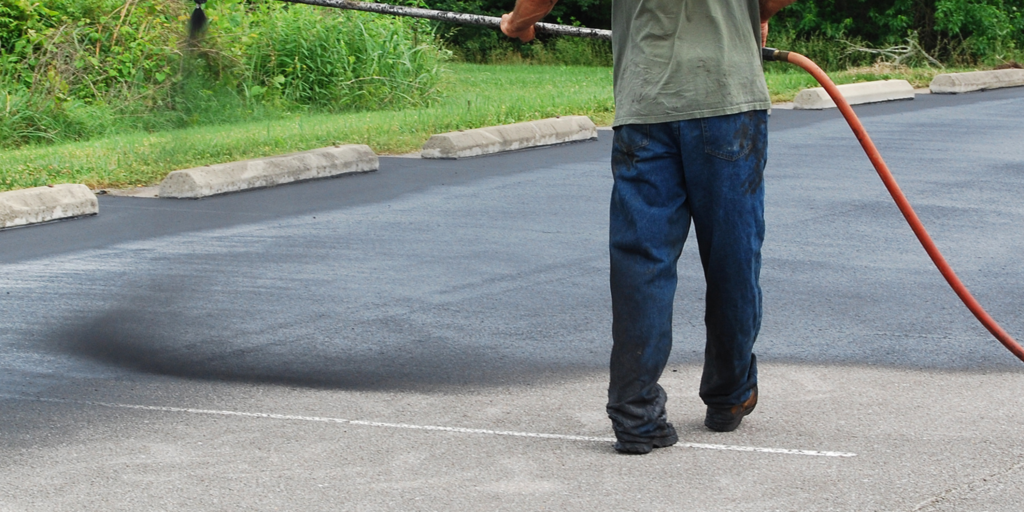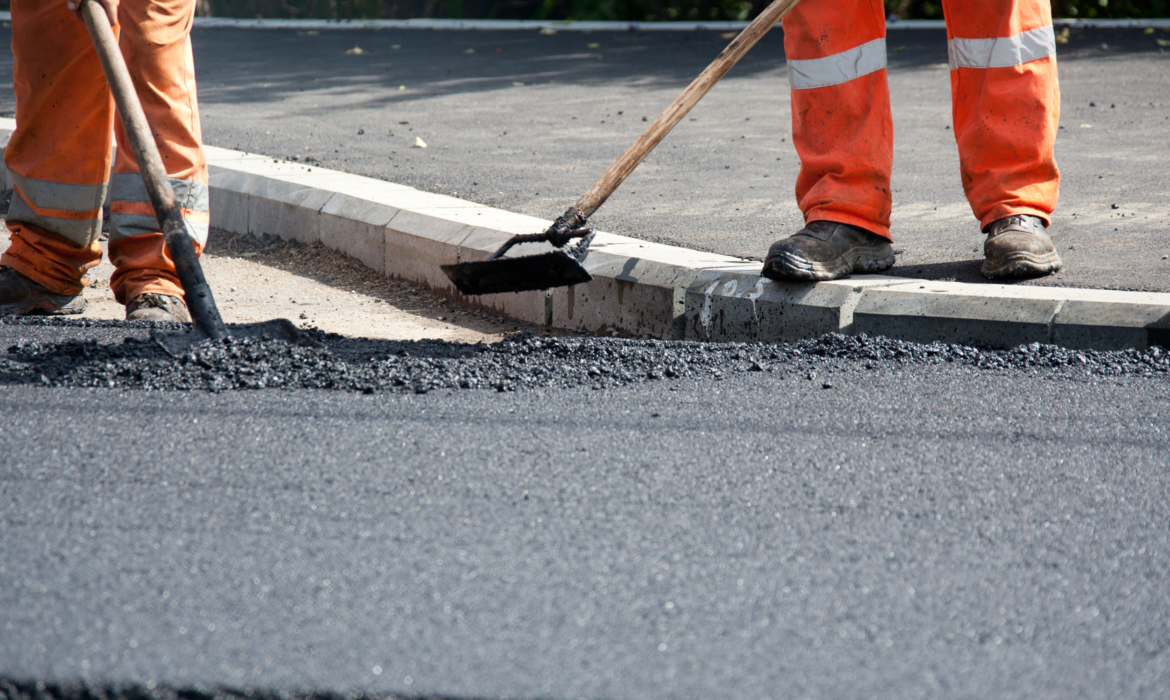You might not think of eco-friendliness when you hear the words sealcoating and asphalt. We should examine their connections and effects more closely before writing them off as environmental enemies. Come with me as I take you on a journey through the fascinating world of seal coating and asphalt. We’ll look at the negative effects that traditional methods have on the environment, explore some eco-friendly alternatives, explain how sealcoating can actually make asphalt last longer and reduce our carbon footprint, stress the need for responsible disposal, and finally figure out how to balance the benefits of sealcoating with the benefits to the environment.
What is sealcoating and how does it relate to asphalt?
Driveways, parking lots, and other asphalt surfaces can be protected by applying a seal coat. Protecting against things like oxidation, water intrusion, and ultraviolet radiation, it serves as a barrier against the elements. If you want your pavement to look like a superhero, sealcoating is the way to go!
Conversely, our roads and walkways are built on asphalt. Bitumen acts as a binder, bringing together aggregates such as sand or gravel. Asphalt is long-lasting even without sealcoating, but it becomes much better afterward.

So, how exactly are the two complementary? The precise application of sealcoating creates a protective barrier that helps asphalt surfaces last longer. Sealing cracks and lowering water penetration help to prevent further deterioration and maintain the pavement’s new appearance.
The environmental impact of traditional sealcoating methods
Traditional sealcoating techniques have traditionally improved and protected asphalt surfaces. Their effect on the environment must be carefully considered, though. One example is the leakage of contaminants into the air and waterways caused by sealants that are based on coal tar.
An additional factor in the development of urban heat islands is the increased absorption of solar radiation caused by conventional seal coatings that wear down with time. As a result, more energy is needed to cool buildings, which in turn makes climate change worse.
In addition, extra seal coat material tends to wind up in nearby storm drains or on nearby vegetation as it is being applied. The presence of harmful substances in this runoff poses a threat to aquatic species and contaminates water sources.
Alternative eco-friendly sealcoating options
Alternatives to sealcoating exist that put environmental protection first without sacrificing quality. As more people become aware of the impact they have on the environment, these green choices have grown in favor.
Water-based sealcoating is one option among several. There are no toxic chemicals or volatile organic compounds (VOCs) in water-based seal coatings, in contrast to conventional sealants made of coal tar or petroleum. They offer superior protection for asphalt surfaces and are composed of all-natural substances.
Sustainable sealcoating mixtures can also incorporate recycled rubber and RAP. We can keep the sealer’s effectiveness while reducing waste by reusing these ingredients.
You won’t have to compromise on longevity or durability by going for an eco-friendly choice. To guarantee that your paved surfaces are protected for an extended period of time, these alternative products have been evaluated and found to fulfill the requirements set by the industry.
How sealcoating can extend the life of asphalt and reduce environmental footprint
Sealcoating asphalt not only improves its aesthetics but also significantly increases its durability. Protecting a surface with a coat of sealant makes it more resistant to environmental hazards, UV radiation, and general wear and tear.
Cracking and degradation are more likely to occur with unsealed asphalt. Premature pavement replacement or costly repairs may be necessary as a result. You may save money and improve the life of your asphalt surfaces by sealcoating them regularly.
Another way sealcoating helps the environment is by lowering the frequency of resurfacing or replacing damaged pavement. New asphalt is made using a process that releases greenhouse gases into the air and uses a lot of energy. Conservation of resources and reduction of carbon emissions from new pavement production can be achieved through sealcoating, which extends the life of old asphalt.
The importance of responsible disposal of used sealcoating materials
To minimize the potential influence on the environment, it is necessary to dispose of spent sealcoating materials properly. Asphalt surfaces that have been seal-coated will wear out and require replacement after a certain amount of time. Still, ecosystems are vulnerable to pollution and damage from the careless disposal of these materials.

The use of sealants derived from coal tar is a prevalent concern with conventional sealcoating techniques. When discarded incorrectly, the high concentrations of polycyclic aromatic hydrocarbons (PAHs) in these goods constitute a threat to soil, water, and air quality.
In response to this growing environmental concern, sustainable options have surfaced. To give just one example, you can get sealants made from asphalt emulsions that are completely free of coal tar and other harmful substances. These alternatives provide a less harmful way to seal asphalt and are more sustainable in the long run.
Conclusion: Balancing the benefits and environmental concerns of sealcoating and asphalt
In order to ensure sustainable operations, it is necessary to balance the benefits and environmental problems of sealcoating and asphalt. The use of coal-tar-based compounds in traditional sealcoating procedures may be harmful to the environment, but there are other, more sustainable solutions.
Choose sealcoating materials that are gentler on ecosystems, like asphalt emulsion or bio-based products, to lessen the impact on our planet. These substitutes reduce hazards to people and the environment without sacrificing protection for asphalt surfaces.
Additionally, asphalt can last longer with regular sealcoating and adequate care, lowering the frequency of repairs or total resurfacing. Not only does this cut down on waste from massive construction projects, but it also saves time and money.
An equally critical part of maintaining an eco-friendly approach is properly disposing of spent sealcoating materials. Make sure these compounds don’t end up hurting wildlife habitats or polluting water sources by following local legislation and recommendations.

